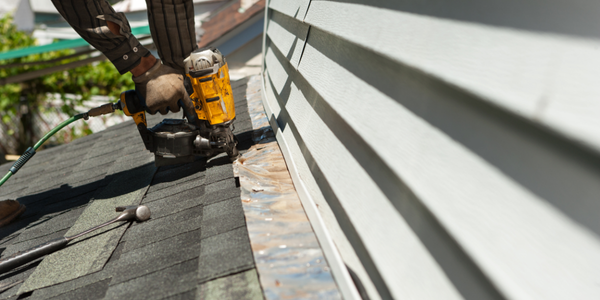What homeowners should expect during a roof replacement
October 6, 2025 at 6:00 a.m.By Cotney Consulting Group.
Roof replacement isn’t a silent or spotless process — but it’s a critical investment in the health and value of your home.
Replacing a roof is one of the largest investments most homeowners or building owners ever make in their property. But for many, the process remains a mystery until the day shingles start flying and nail guns fire up overhead. Knowing what to expect during a reroofing project step by step can help reduce anxiety, improve communication with your contractor and ensure a smooth, successful outcome.
Here’s a clear, homeowner-focused look at what happens before, during and after your reroofing job begins.
Step 1: Jobsite setup and protection
Before removing the first shingle, your roofing crew should arrive and prepare the site. This includes setting up:
- Dumpsters or trailers for debris
- Tarping or plywood to protect landscaping, windows and siding
- Material delivery (shingles, underlayment, nails, flashing, ventilation)
- Safety gear such as harnesses, anchor points or guardrails
Expect early noise as materials are staged and old roofing is prepped for removal. A good contractor will walk the property and meet all safety and access needs before the tear-off begins.
Step 2: Tear-off of the old roof
Next comes one of the loudest and most labor-intensive parts: The tear-off. The crew removes the existing shingles, underlayment, flashing and other components, typically using pitchforks or special tear-off tools.
This stage exposes the roof deck (the plywood or OSB underneath). It’s common for the contractor to find damaged or rotted wood, especially near valleys, chimneys or eaves. If your proposal includes a clause for deck repairs, these sections will be replaced and documented before new materials go on.
During this phase, expect significant noise and some vibration throughout the house. Items hanging on walls or stored in attics may shift, so removing fragile items in advance is a good idea.
Step 3: Deck inspection and repairs
With everything stripped away, the contractor can now inspect the structural integrity of your roof deck. This is a critical checkpoint. Any soft spots, moisture damage or warping should be corrected before proceeding.
Common repairs may include:
- Replacing water-damaged plywood
- Refastening deck boards that have loosened
- Addressing structural issues such as sagging areas or inadequate framing
A reputable contractor will review any changes or cost implications with you before moving forward.
Step 4: Installation of underlayment and flashing
With a sound deck in place, the next step is moisture protection. Synthetic underlayment or felt is rolled out across the roof surface. In colder climates, ice and water shields are added along eaves and valleys to prevent damage from ice dams.
Drip edge metal is installed along roof edges to direct water into gutters. Flashing is placed around vents, chimneys and skylights to prevent leaks in these vulnerable areas. Flashing may be reused or replaced depending on its condition and your contract terms.
Homeowners often overlook these components, but play a major role in long-term roof performance.
Step 5: Roofing material installation
Now comes the part everyone sees: installing shingles, metal panels or other roofing material. Crews generally start at the lower edge and work their way up. This step involves:
- Laying shingles or membranes in overlapping rows
- Installing ridge vents or box vents for attic ventilation
- Integrating pipe boots, vent covers and any required accessories
- Capping ridges and hips for waterproofing and aesthetics
Depending on the size and complexity of your roof, installation may take one to three days. Commercial or specialty roofs may take longer.
Step 6: Final cleanup and site inspection
Once the new roof is in place, the crew should thoroughly clean up. This includes:
- Removing all debris and materials
- Rolling the yard and driveway with magnetic nail sweepers
- Rechecking gutters, downspouts and vents
- Hauling away dumpsters or trailers
Your contractor should also perform a final inspection to confirm the roof is watertight, appropriately ventilated and aligned with manufacturer installation guidelines. Some contractors will even provide photos or invite you to review the work with a supervisor.
Step 7: Documentation and warranty handover
At project completion, you should receive:
- A final invoice or receipt
- Warranty paperwork for materials and labor
- Any manufacturer certifications or registration instructions
- A brief explanation of roof care or future maintenance tips
Ensure all documentation is safe. It may be needed for warranty claims or when selling your home.
Communication throughout the process
Throughout the reroof, your contractor should keep you informed. Expect regular updates on:
- Weather delays or scheduling shifts
- Decking repairs or change orders
- Delivery or equipment staging
- Estimated completion time
You should also know who to contact if you have concerns during the job, and a project manager or supervisor should always be reachable.
What you can do to prepare
To help your contractor and protect your property:
- Move vehicles away from the house and clear access to the driveway
- Remove breakables from walls or attic storage areas
- Inform neighbors of potential noise
- Keep pets and children indoors during active work hours
A little planning can go a long way toward a stress-free project.
Final thoughts: A reroof is loud, messy — but worth it
Roof replacement isn’t a silent or spotless process — but it’s a critical investment in the health and value of your home. When done right, it’s efficient, respectful and professional from start to finish. Knowing what to expect lets you be a more confident homeowner, ask the right questions and enjoy peace of mind with a watertight, well-installed roof.
Learn more about Cotney Consulting Group in their Coffee Shop Directory or visit www.cotneyconsulting.com.














Comments
Leave a Reply
Have an account? Login to leave a comment!
Sign In